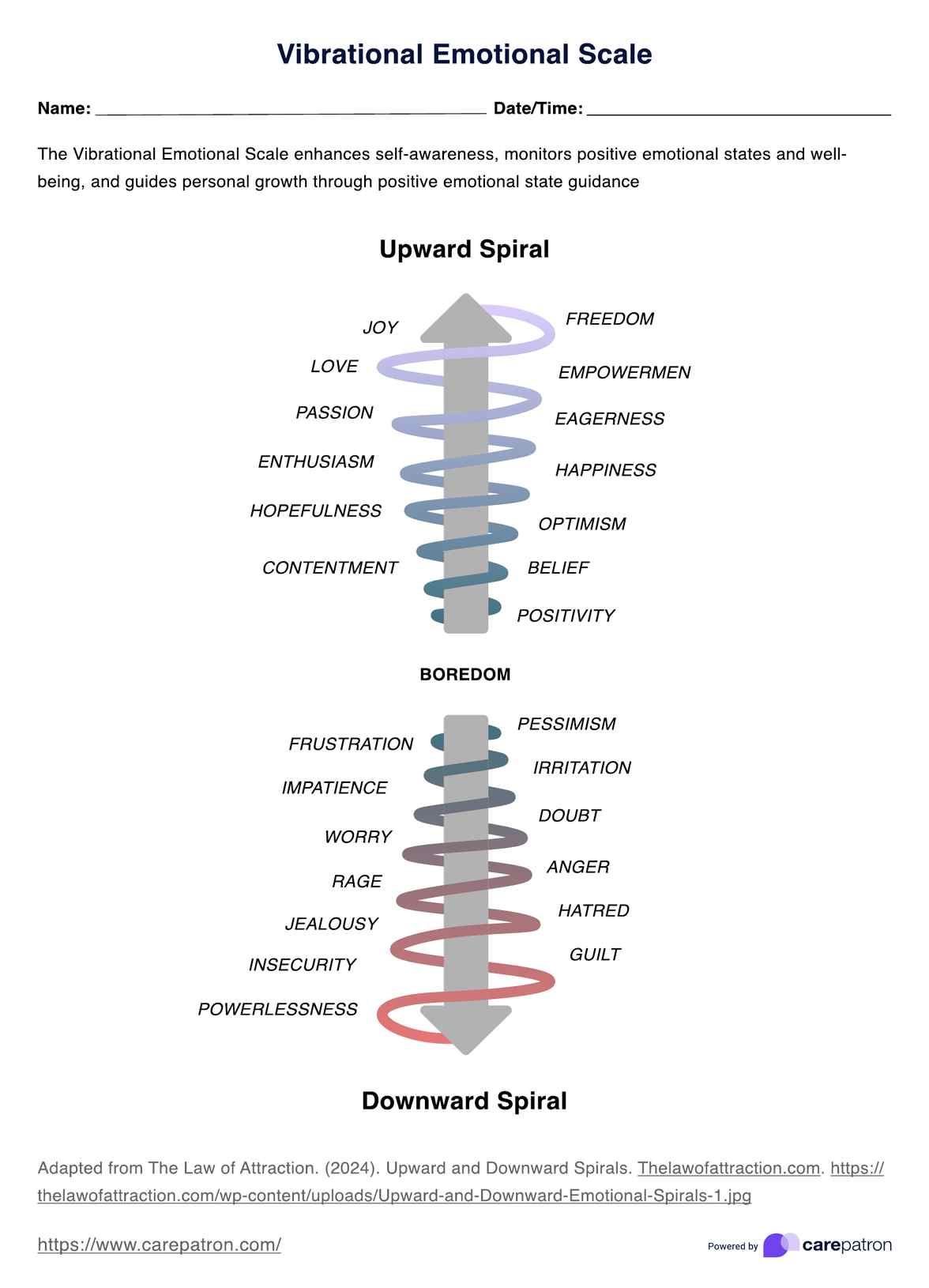The vibrational scale of emotions categorizes feelings based on current emotion and their energy frequency, common emotions ranging from lower vibrational states, current emotions negative ones like fear and anger, to higher vibrational states, current emotions like joy and love.

Vibrational Emotional Scale
Discover the Vibrational Emotional Scale - explore the spectrum of emotions and their impact on personal growth and well-being.
Vibrational Emotional Scale Template
Commonly asked questions
A vibrational scale measures the frequency or energy level of emotions, thoughts, or experiences, with higher vibrations associated with higher vibration emotion or positive, higher vibrations emotion or emotions, and lower vibrations with new or negative feelings.
The emotional feeling scale is a tool that helps individuals identify and categorize their emotions based on how they generally feel their highest vibrational frequency when feeling their lowest emotion yet, guiding them toward higher vibrational states for improved well-being.
EHR and practice management software
Get started for free
*No credit card required
Free
$0/usd
Unlimited clients
Telehealth
1GB of storage
Client portal text
Automated billing and online payments











